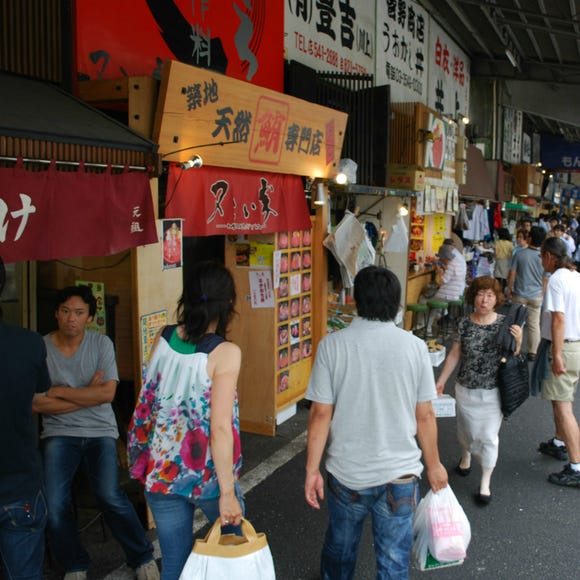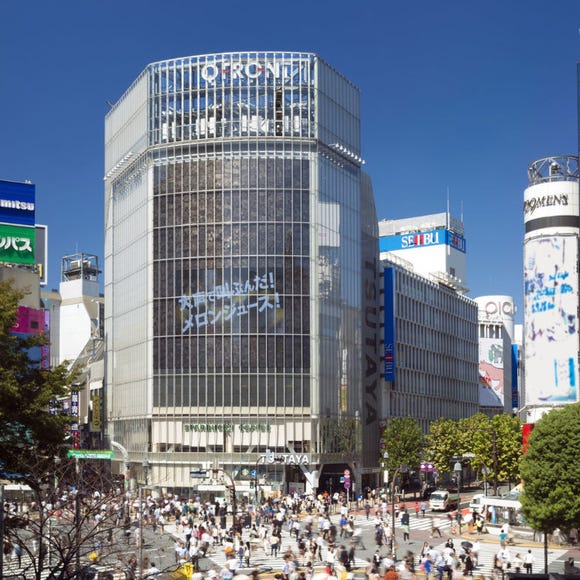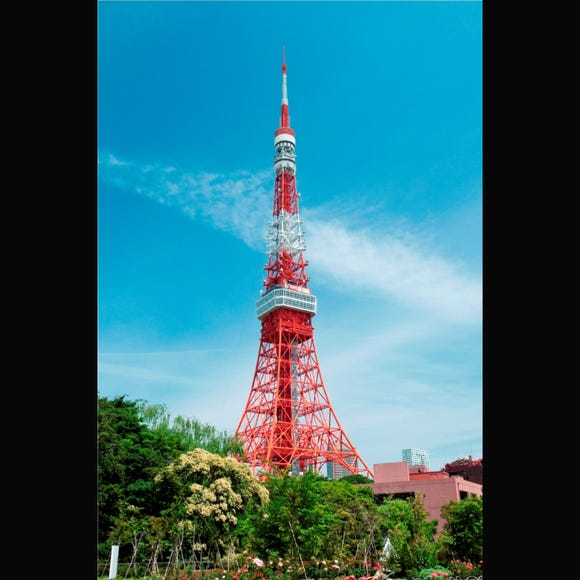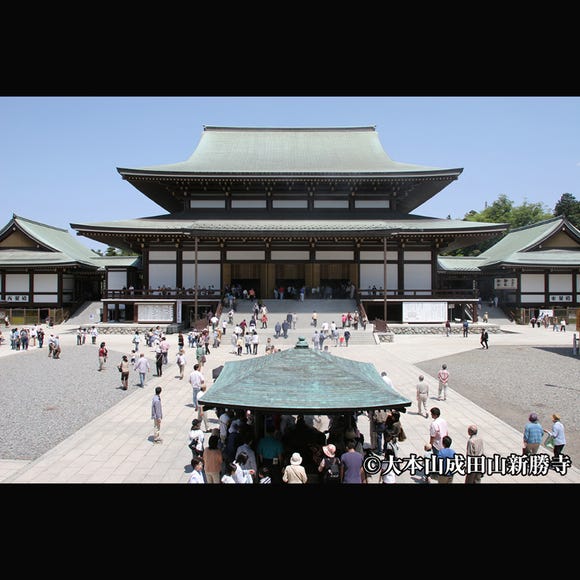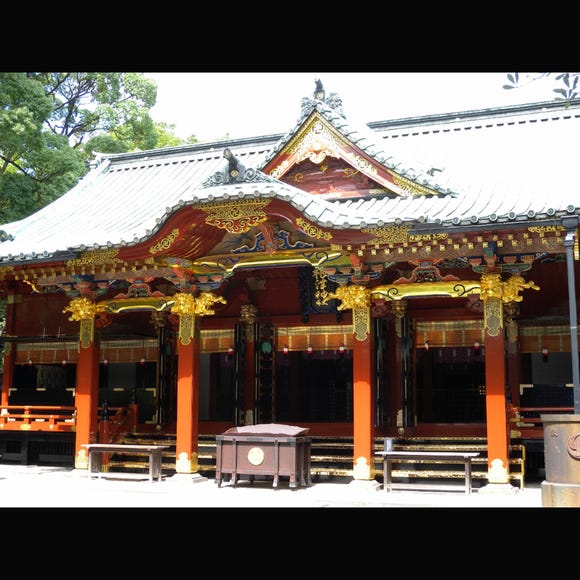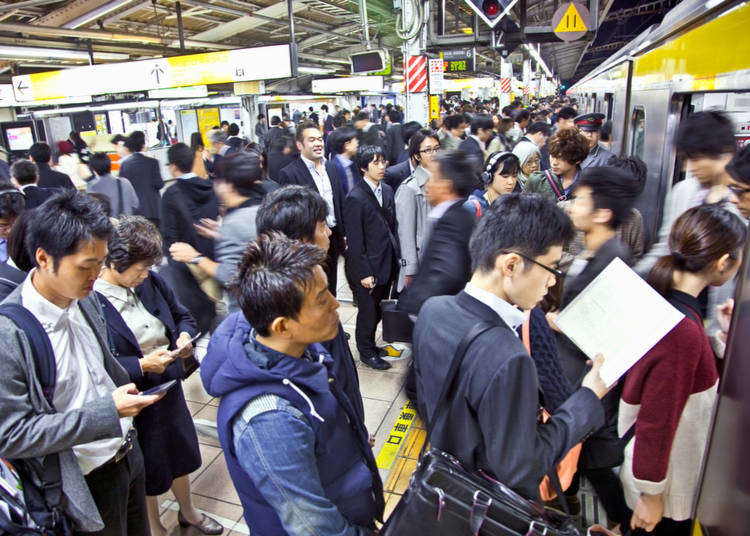
Every country has its own unique qualities. That's what makes traveling so much fun after all. Japan is no exception. In fact, it may be one of the most curious places you'll visit.
You may have seen or read about Japan’s crowds, unique fashion trends or quirky phallic festivals, but oftentimes the most surprising experiences come from everyday life, customs, habits, or rules.
The best way to not get overwhelmed is learning about them beforehand. We spoke with a group of people of different nationalities who recently visited Japan to hear their experiences directly. So, let's dive in and take a look at 21 of the most shocking and surprising things about visiting Japan!
1 – Credit Card/Debit Card use (or lack thereof)

One of the first things you'll notice when you arrive to Japan, is that, unlike many other countries, many businesses such as restaurants, bars, shops and so on, tend to accept only cash.
Cash in Japan is king. This is not to say that credit cards are not used: major stores, chains, malls, gas stations, and more are likely to accept them. But plastic indeed is less frequently used than in other countries, so it's always better to carry with you some cash when in Japan.
Why is this though? Well according to a survey by the Japanese Government, 58% of Japanese people are reluctant when it comes to using a credit card. Credit cards are not considered to be convenient or save time. Japan is considered by most (including its citizens) to be very safe, so the fear of pickpockets is at the minimum (while there is a very high fear of identity theft/fraud). Perhaps these factors together plus a lack of a perceived need to change the status quo is what has created the current situation.
2 – Lack of elevators/escalators in train stations
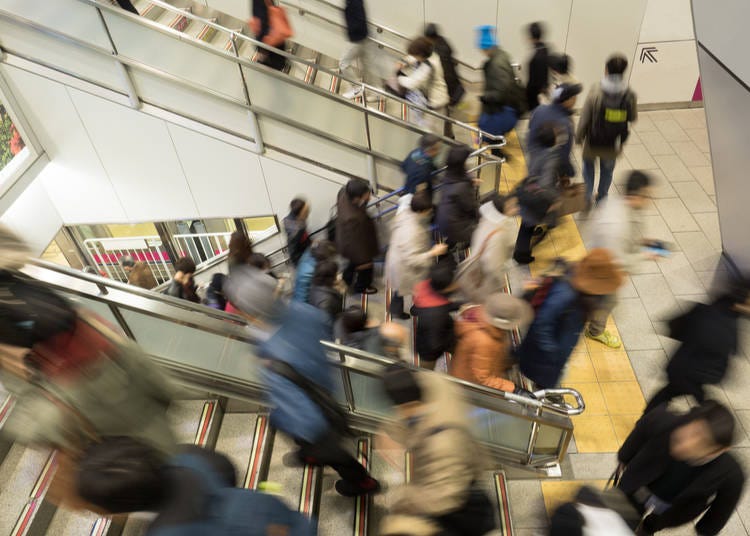
This is surprisingly true. Especially in a colossal city like Tokyo with immense daily commuter traffic, one would expect a lot more escalators and elevators. In some cases, you sort of have to look for them. While most stations currently have them, there are not as many as you would think. Elevators could be behind some corners on the way towards the exit, and escalators are usually only at one or two of the potential exits from the train platform to the exit of the station.
You will likely see signs, and if you need an escalator, you'll likely end up finding one, but they will not always be immediately visible.
3 – No trash cans in the street
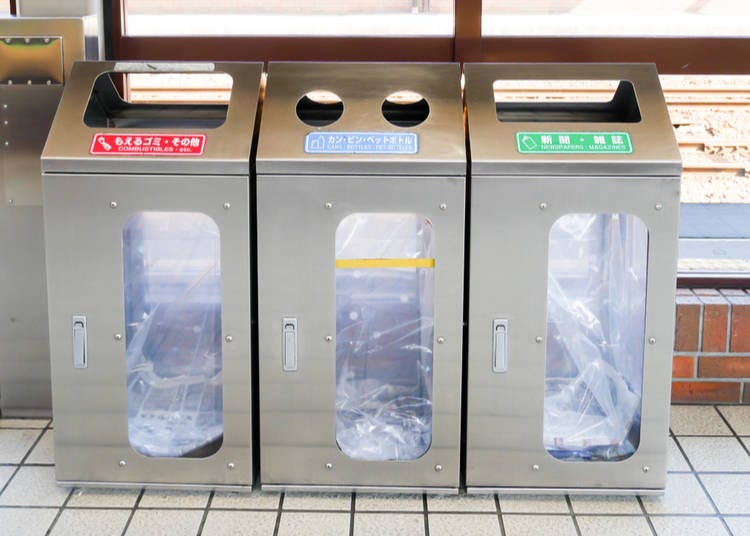
This is very much a reality that every tourist and local has to deal with. While visiting your favorite landmarks and trying some of the amazing Japanese street food, you may find yourself carrying a bunch of trash you don't really know what to do with (at times for a very long time).
It wasn't always like this, though. Trash cans in Tokyo used to be much more common, until 1995.
In one of the largest acts of domestic terrorism, on March 20, 1995, five members of the cult Aum Shinrikyo released a deadly gas into Tokyo's subway stations during morning rush hours, killing 12 people, injuring 5,000, and affecting even more.
Citizens demanded the government do something to improve the safety of commuters. Trash bins in stations and in the street were considered to be a perfect hiding place for potential similar attacks or bombs, so they disappeared almost overnight.
Over 20 years later, this reason remains one of the driving ones, but it seems also that the lack of trash cans also reduced the littering. Counterintuitive as it may seem, people tend to leave more trash where there is already some.
So what to do with your trash. In Japan, the easiest approach is to carry your trash with you until you come back to your hotel – or come to a trash bin at a convenience store or elsewhere.
4 – High-tech toilets
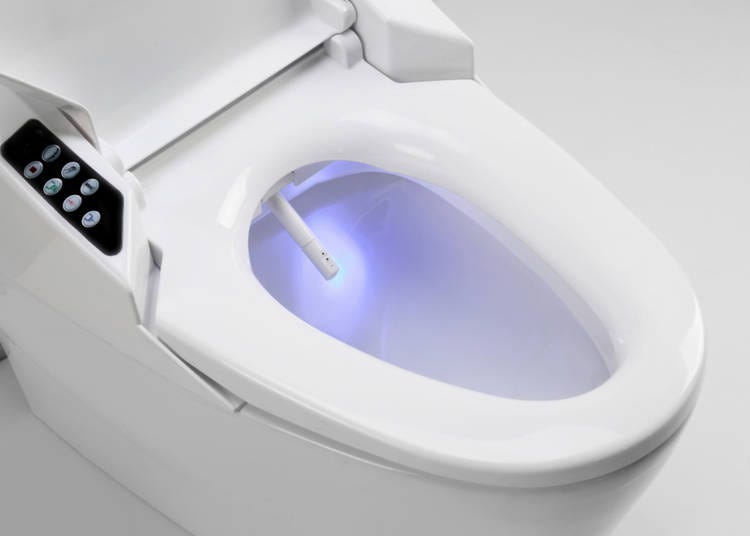
Pictures and videos of Japanese toilets have made rounds on the internet because users were amazed by their functionality and options. Japanese toilets (private and public alike) are usually equipped with heated seats, in-built bidet/Washlet (water jets with different angles and intensity), and sound system to cover undesirable noises. All of these functions are controlled by a computerized control pad on the side of the toilet for a very pleasant "private time."
5 – Squat toilets
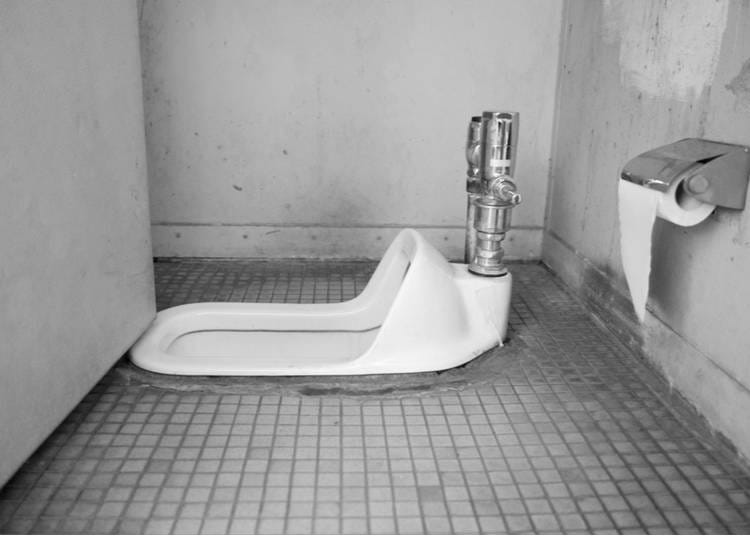
On the other side of the Japanese toilet spectrum is the squat toilet. Although they are found in other countries as well they can be a little disarming for many Western visitors, as they seem to be extremely uncomfortable to use (and often they are, unless you're a gymnast, a bodybuilder, or someone who's been using them your whole life).
Essentially these are holes in the ground with small platforms where you're supposed to place your feet. They are not too bad, if you're a man going for number 1, but if you're a woman or if you need to go for number 2, and you're not used to them, they might be quite challenging to use. They are definitely more hygienic than their counterparts, though, since your skin will never touch any part of the toilet.
In many large cities, this style of toilet is starting to fade out, but if you visit Japan’s more local areas, be prepared to see them more often!
6 – Guys approaching women on the street and chatting them up as they walk

This is also a very common thing to see in Japan, especially in busy areas, and in areas that have a lot of night-life entertainment. If you see or experience firsthand some silver-tongued, often attractive guy approaching you or a woman in the street, it could be for two main reasons.
The guy might want to employ the woman. There are many businesses in Japan that hire attractive women to entertain the guests.
The misconception among many foreigners is that these establishment are markets for sex. This is more often not the case. While businesses that offer some sort of sexual experience do exist in Japan, most of the times, people who approach women on the street are trying to get the lady to work in a hostess/girls bar, where women spend time with men, chatting and drinking and listening to their problems while offering words of comfort. While a sociological curiosity, no sexual acts of any kind are involved. These businesses are very common in Japan but not elsewhere, which is probably why many visitors mistake them for a different kind of locales.
Another reason may be the so called nampa. Nampa is a word that refers to a man approaching a woman and trying to pick her up. Often nampa involves approaching a random woman and chat even when she doesn't seem to be interested in participating to the conversation. It's unlikely that the target of a "nampa" is physically bothered, touched, harassed, or stopped –many women tend to outright ignore this kind of contact. It's just about talking and talking until the girl might finally talk back.
7 – Sheer number of commuters and how organized they are in queuing
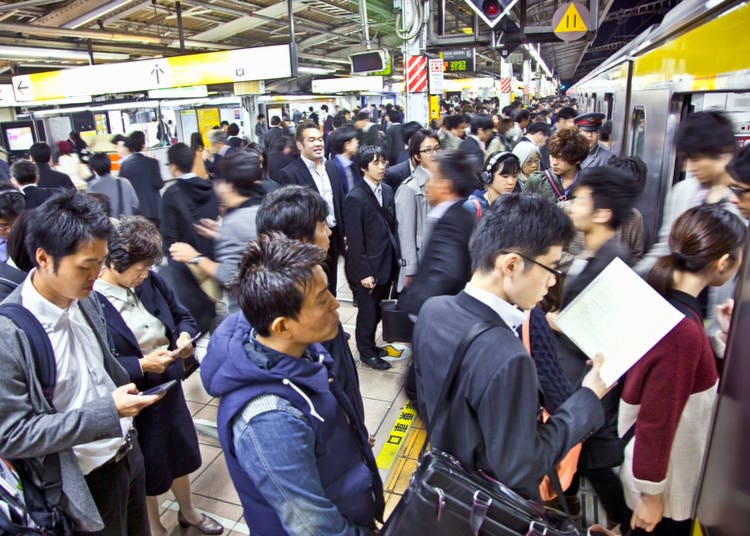
In a city like Tokyo, commuters are everywhere and they are always going somewhere. Tokyo is also home to some of the world’s busiest train stations. Especially during rush hours, the number of commuters that uses public transportation is staggering.
You would expect to experience chaos at every corner to get in and out of the train, people pushing, rushing to get in or out of the cars, and the likes. In reality though, by and large, commuters in Japan are very well organized. They know where the doors of the train will open and, on the platform, they will organize in two lines on the sides of the door. When the doors open, the people exiting the train do so walking between the two lines of people that formed on the platform. Once there is enough room to start walking into the train, people will pour in.
Be aware though. During rush hour the trains will get impossibly packed. At some stations, station attendants will push people in to squeeze them into the car as quickly as possible (in order to stay on schedule). Of course, you can always wait for the following train(s), but many people don't seem to like waiting even for just a few minutes.
8 – Tokyo is not as busy and polluted as you'd imagine
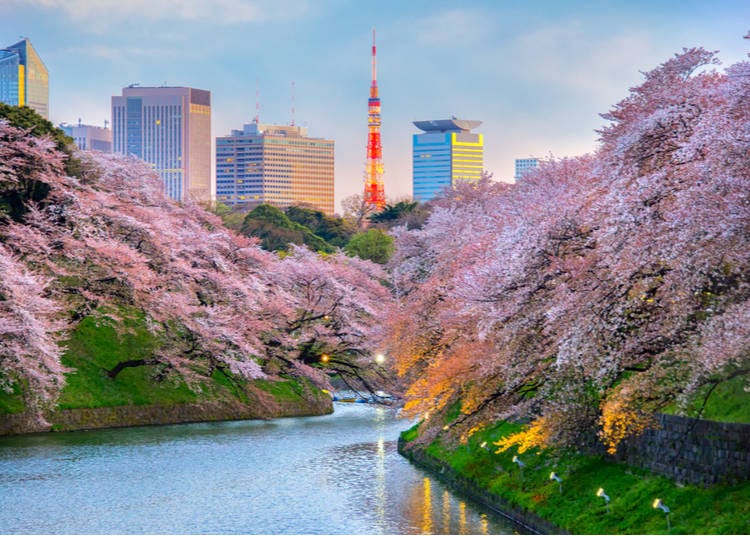
Many visitors expect Tokyo to be impossibly chaotic, crowded and polluted, because it would make sense. Being the largest metropolis in the world, one would expect it to be proportionately as chaotic as some of its other counterparts around the world.
Visitors are often pleasantly surprised by the fact that Tokyo is nothing like that. Of course you'll find some areas that are extremely busy, and even hard to walk in because of the amount of people, but for the most part, Tokyo manages to create spaces in a way that not only maintain the city more livable and the air more breathable, but also the streets and districts very clean, for a city of that magnitude.
9 – No talking on phones on trains
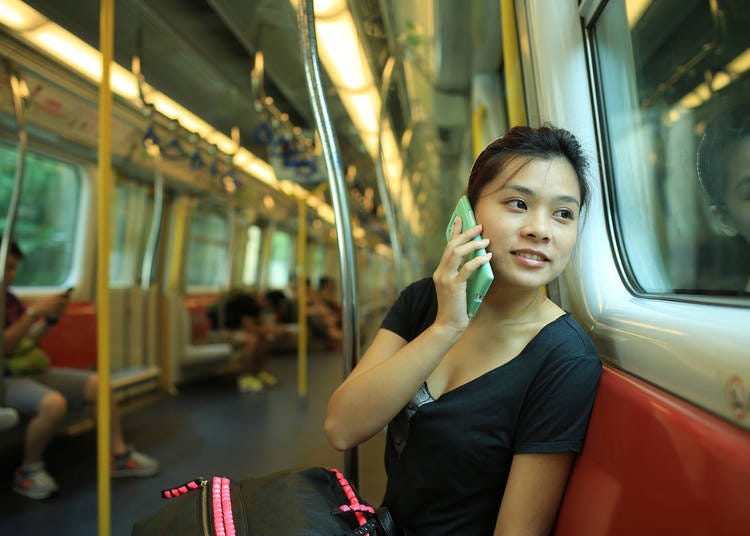
Unlike what you might be used to in other countries, speaking on the phone in public places, and especially in confined spaces, in Japan, is considered to be bothersome and disrespectful. By and large you will have reception on trains, but while it's acceptable to text or browse the internet, people tend to refrain from talking on the phone, even in cases of emergency. (Same goes for game gear – with headphones only!)
The reasoning behind it is that of trying not to bother people around you. So, if you're in Japan and receive a phone call while on the train (or in a restaurant for that matter), take it outside, if you can, or wait until you can talk freely without the risk of involving other people in your conversation.
By the same token, Japanese commuters also tend to be as quiet as possible while riding. This is not to say that no one talks, or that there are no loud people whatsoever on trains, but generally, people will try to keep conversation to a minimum and in any case will try to not be too easily heard by bystanders.
10 – Train stations often play recordings of birds chirping from speakers
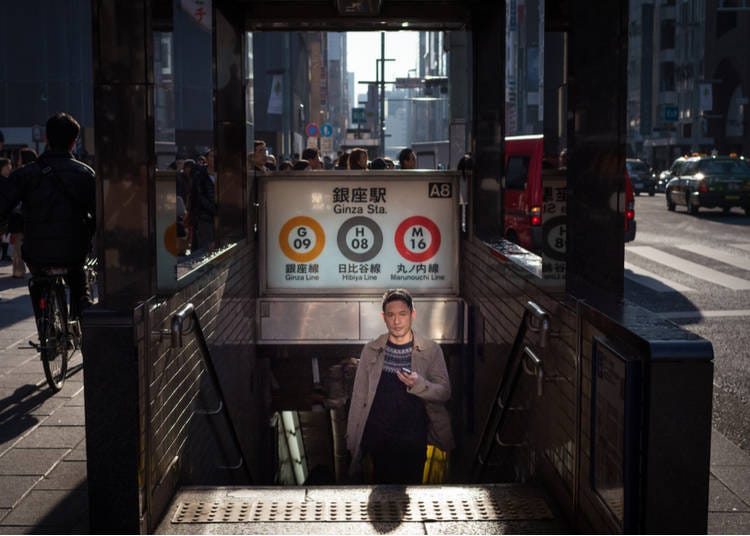
This is something that when you live in Japan you don't really notice much, but it seems to be a pretty surprising feature for visitors. In other countries, speakers in train stations tend to serve only the purpose of communicating messages to commuters. In Japan, many train stations will have their own soundtrack of sorts: music indicating when a train is coming or getting ready to go. And often birdsong.
So why are these relaxing sounds played? Listen more closely, and you’ll find that the sounds mark where station exits are!
11 – While snacking is fine, eating while walking isn’t

Depending on what country people are from, this aspect of Japanese unwritten rules tends to be very surprising for visitors. It's not uncommon in many cities to grab a bite on the go while going anywhere.
In Japan, though this is seen to be disrespectful. There is no rule or law that would prevent you from eating in the streets, but it's best not to. The worst that could happen is that you might receive a stink eye from someone, but nothing more – though recently some communities have started making moves to curtail eating on the street.
The reason behind this choice of behavior is that by eating while walking you might inadvertently litter, or you might even bump into someone, especially considering how busy certain areas of Tokyo are.
What you could do is eat your food on a bench or in a park. Not only will you not potentially bother other people, but it's also a good excuse to spend some time in one of the many beautiful green areas Japan has to offer.
12 – The sheer size of Tokyo

Tokyo is definitely a very large city, but it's hard to picture its sheer size until your flight starts landing – and then again when you start seeing the maps. But the city also has a solid sense of diversity, and it’s easier to think of Tokyo as a series of neighborhoods clustered within cities, each with their own personality.
A good way to see Tokyo's many skylines and the differences from one area to the other of the city is by taking the Shinkansen bullet train from Tokyo to any other city. Not only will you be taken through very interesting sights of the city, but you will also experience firsthand how long it takes to actually get out of the borders of Tokyo, despite traveling on one of the world’s fastest trains.
13 – The care that goes into packaging your purchases
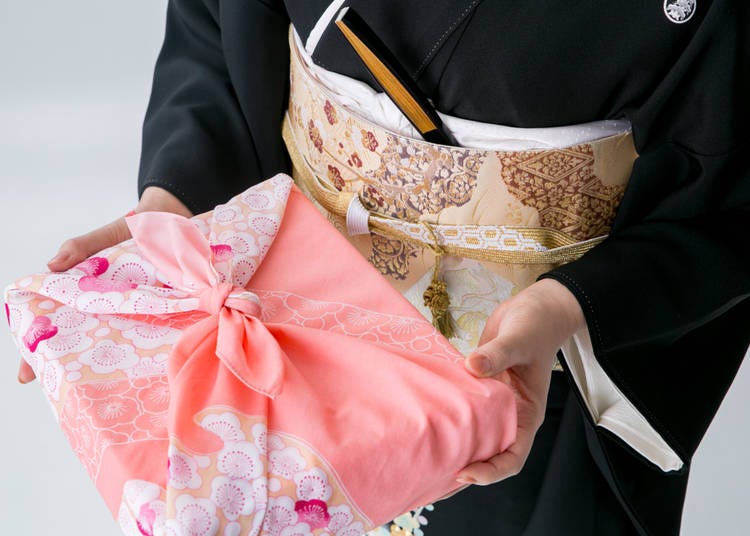
Japan is well known for having a very good customer-care attitude. This is often clear also from the behavior of staff in stores, and from their attention to detail.
Whenever you buy something, employees at the store or market will make sure that what you're buying is not defective, and, if it's something that requires packaging or that you want wrapped, you'll also see how careful and beautiful the wrapping is.
This comes with also less attention to paper use than many people from other countries may find wasteful. In order for the packaging to be up to the store's standards, often a larger amount of paper is used. If you're conscious about paper waste you can ask to use less paper, or avoid wrapping all together.
14 – Passengers of taxis need not touch the passenger doors
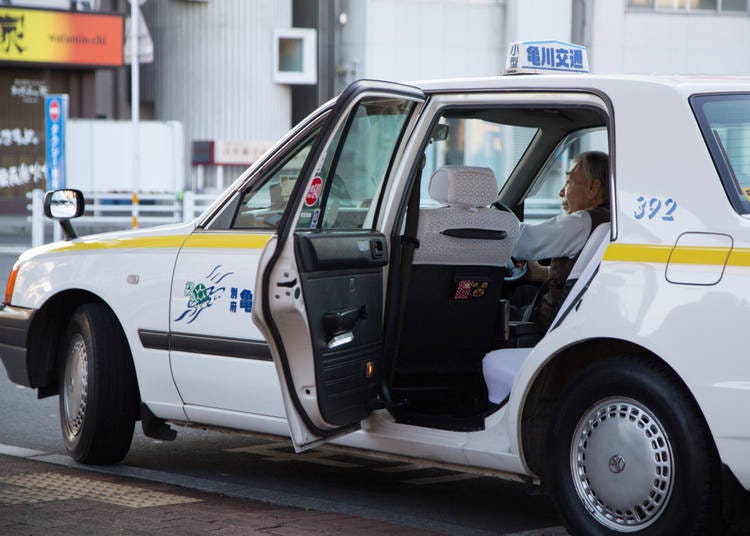
This is a trap that catches almost all visitors in Japan. Japanese taxis' backseat doors are automated: the driver opens them for the passengers as they enter the vehicle and after the ride.
It's very common (and understandable) that out of habit people would open the doors themselves. Many taxis display a sign asking not to open the doors in both Japanese and English, but it's very hard to train yourself out of doing something that for most of us is an automated action.
When you're in Japan, if you need a taxi, try to remember not to open the door yourself. They will open, and in the rare case that they won't, the driver himself will get out of the car to open it for you.
15 – No tipping

Tipping at restaurants or other establishments is not a very common custom around the world, but if you are from a country where tipping a certain percentage of the check is required, remember that in Japan, not only is it not required, but it's even frowned upon and considered disrespectful.
So, don't worry about tipping (yes really!), even if you received the best service of your life. Just take care of the check. Keep in mind though, that many restaurants and cafes do charge a small amount just for sitting - a table charge of sorts. For this reason, you'll often be presented with a small appetizer before you even order anything.
16 – Not many places to sit outside
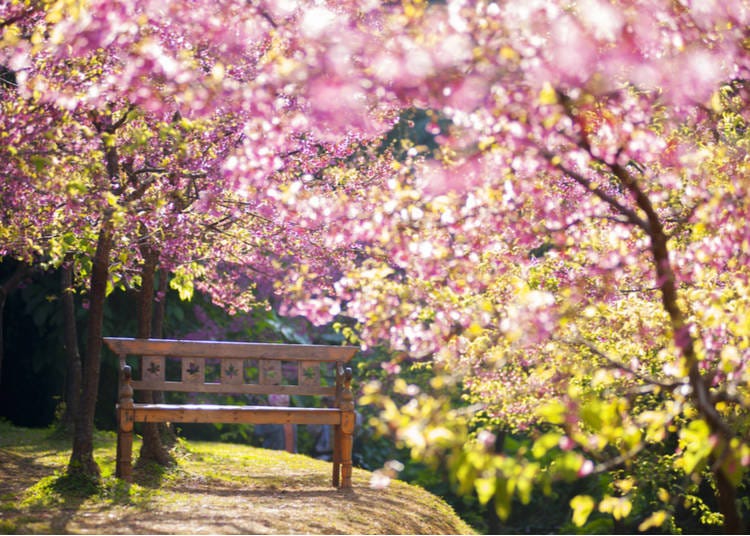
This is one of those things that usually goes unnoticed to people who live in Japan, but it becomes evident when one brings your attention to it.
Despite having large outdoor spaces, even outside of parks, Japan doesn’t have proportionately many benches to sit on.
You'll often find yourself quite tried by your sightseeing, and you'll want to rest a little bit on a bench, but you may have a harder time than you think finding one. They are much more common in parks (although less than what they would be in other cities outside of Japan), but they are very rare to find on sidewalks and in general in public outdoor spaces.
17 – Not many people give up their seat on trains and public transportation

This aspect of Japan often confuses visitors. In many parts of the world it is common for people to give up their seat for the elderly, or for people who seem to be needing it more than we do (expecting women, or people with small children, etc.).
Transportation in Japan of course has seats reserved for the elderly, differently abled, and in general to people who might need it more than the average commuter, but outside of those seats, most people seem to be reluctant to give up their seat.
It's hard to say where this kind of behavior is originated from, but it might in part derive from the fact that Japanese people are worried that by offering a seat to someone only because they look, according to us, as they may need it, could be considered offensive.
It does happen that younger people offer their seat to an older person, only to be told that "it's not necessary."
Similarly, people in Japan tend not to hold doors open for people entering or exiting the same building, because, unlike the perception in many other countries, holding the door open is seen as something that might make the other person rush so not to look rude at your act of kindness.
18 – Train cars reserved for women passengers only
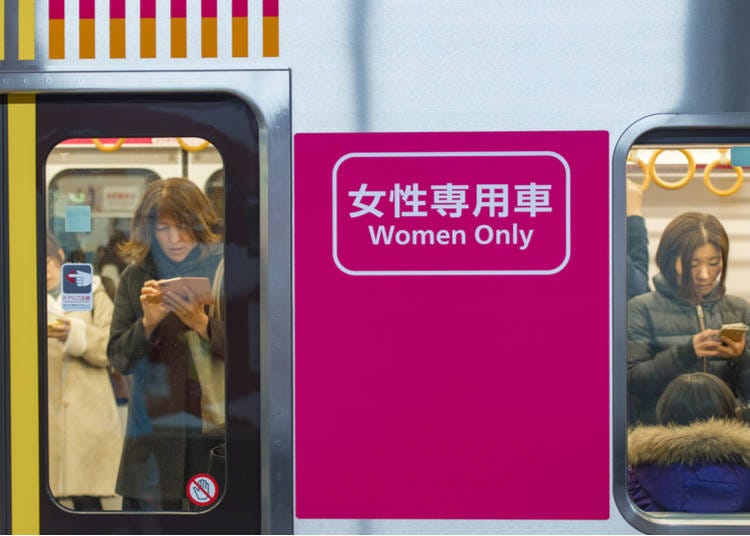
It will likely happen in Japan that you will see train cars reserved only for women. These cars are usually reserved to women only during rush hours in the morning and evening.
If you're a man and mistakenly enter one, you'll usually be politely asked to change car by a train attendant, as soon as they realize you're in there.
These cars were introduced to reduce the cases of sexual harassment in crowded trains. The cars usually have signs in both Japanese and English marking them as "women only" cars, and they are also of a different color than the rest of the train.
19 – Vending machines everywhere
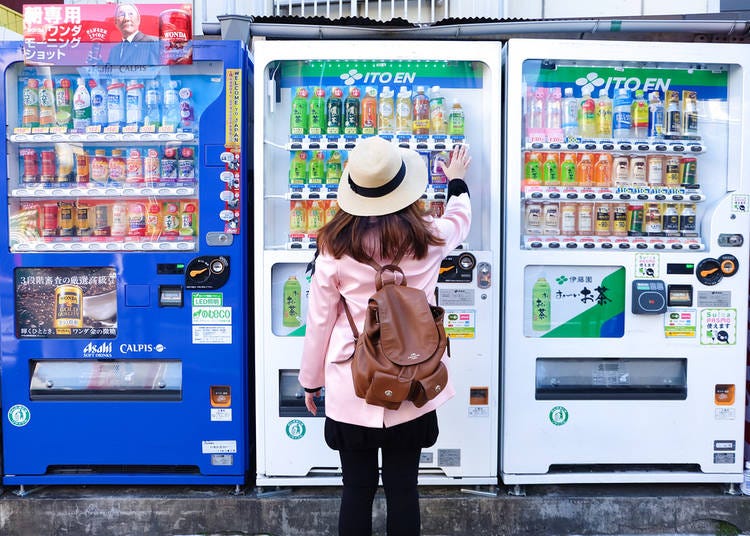
Vending machines are extremely popular in Japan. There are millions of them in almost every corner of every city, however rural.
They sell all sort of products from the very common ones that have drinks such as coffee, green tea, juices and water, to others that sell snacks, and others that sell some of the most unique items one could think about when it comes to vending machines.
Others sell ramen, fish soup, raw rice, umbrellas, clothes, fruit, eggs, surgical masks, and in Roppongi (a neighborhood in Tokyo) even puppies.
20 – Digital celebrities

Japan, more so than many other countries, is famous for its animation scene. Japanese anime and animation movies are very famous, but what about celebrities? Well Japan has some of those too.
For example, Hatsune Miku is a very popular celebrity singer in Japan. Only thing that makes her different from others is that she is digital.
Not only that, but characters from videogames can also become the face of major companies. For example, the character of Lightning from the videogame Final Fantasy XIII is the model for the advertisement campaign of giants like Nissan and Louis Vuitton.
21 – Drunk ‘salarymen’ in the street are a common sight
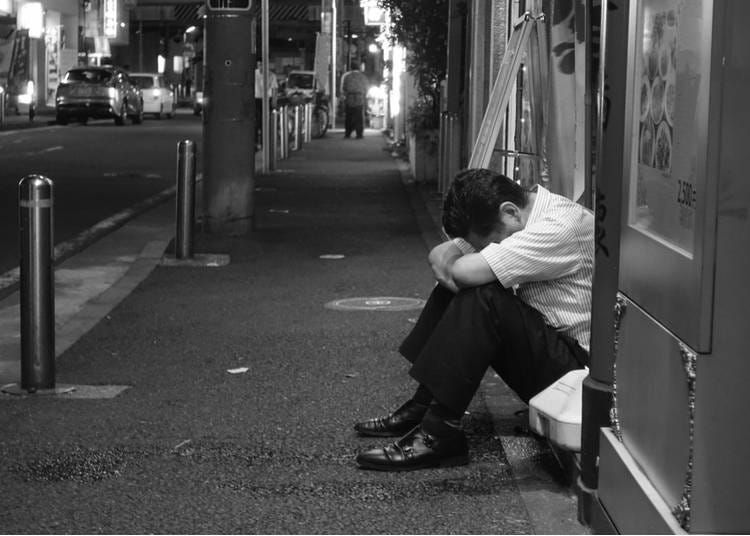
Alcohol in Japan is very much a social lubricant. Moreover, many business transactions are often concluded over drinks and food, and drinking has become something very common, not only among friends and potential business partners, but also as a way to bond among coworkers and between employees and employers.
Drinking with one's coworkers and boss is more of an obligation, at times, than it is a way to unwind and relax. Even though things are slowly changing and new companies don't do it as frequently, more traditional companies often have the so called nomikai, a term that combines the Japanese words for "drinking" and that for "gathering." When your boss or superior asks you to go drink, it's considered to be rude to turn them down. That's why it is very common to see salarymen and their bosses drinking (heavily) at the end of the work-day until around 9 or 10 pm (the following day they need to go back to the office). As a result, drunk salarymen (even drunk to the point to be sleeping on the sidewalk) is a common sight in Japan, and especially in bigger and busier cities.
Written by:

- Area
*Prices and options mentioned are subject to change.
*Unless stated otherwise, all prices include tax.
Limited time offer: 10% discount coupons available now!
-

15 Must-Try Sushi Restaurants in Tokyo (+5 Trending Areas to Explore for Foodies)
-

Professional Photos Even Beginners Can Shoot! 10 Tips for Taking Stunning Cherry Blossom Photos
-

Where to Eat in Yokohama: 10 Must-Try Restaurants for Yakiniku, Izakayas, Unique Dining & More
-

The CASIO S100: How CASIO's Masterpiece Calculator Redefines Business Elegance With Japan-Made Reliability
-

Step Into the Story: Inside Immersive Fort Tokyo
-

12 Unique & Fun Tokyo Food Tours to Enjoy in 2024
-

Warashibe Gyoza: Try Over 20 Types of Akihabara Gyoza at this Insane Buffet!
-

Exquisite Evolution! 4 Latest Japanese Skincare Products with Unique Ingredients
-

[MOVIE] Folding Fun at the International Origami Center
-
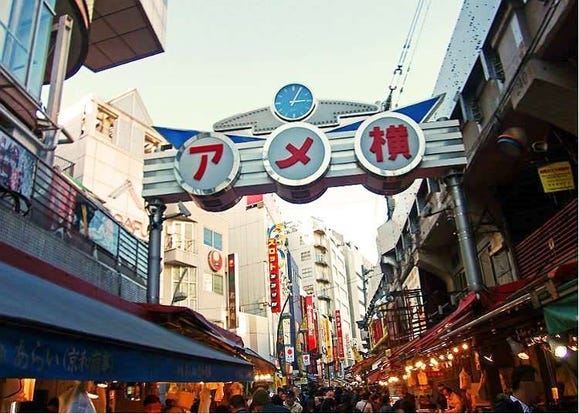
Ueno Station Area Guide: Fun Ways to Explore Tokyo's Popular Destination (Area Map & Sightseeing Tips)
-
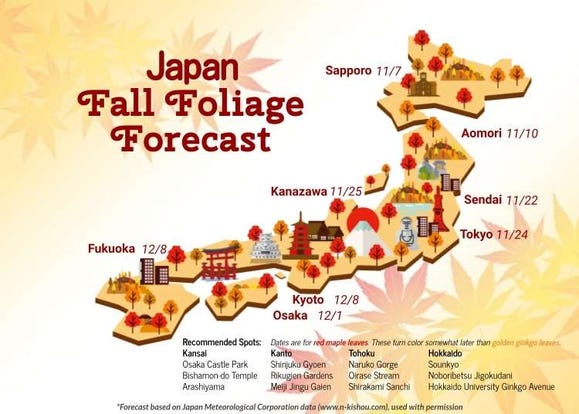
Autumn in Japan 2024: Fall Foliage Forecast & Where to Enjoy the Colorful Leaves (+Tour Info)
-
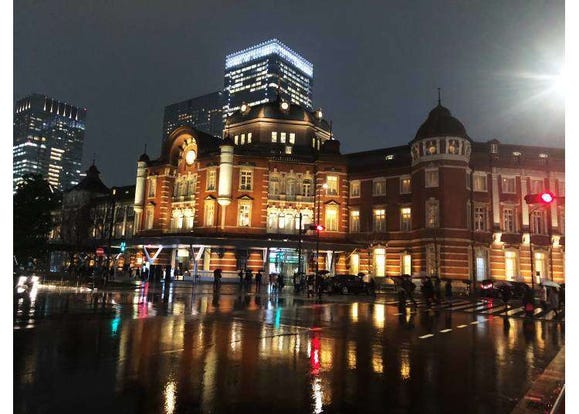
Exploring Tokyo Station: 10 Must-Visit Spots Around the Heart of Tokyo
- #best ramen tokyo
- #what to buy in ameyoko
- #what to bring to japan
- #new years in tokyo
- #best izakaya shinjuku
- #things to do tokyo
- #japanese nail trends
- #what to do in odaiba
- #onsen tattoo friendly tokyo
- #daiso
- #best sushi ginza
- #japanese convenience store snacks
- #best yakiniku shibuya
- #japanese fashion culture
- #best japanese soft drinks















